AutoCAD Commands to Speed Up Your Drawing Abilities
Today we’ll be looking at a few easy ways to speed up AutoCAD abilities for your drafting experience.
All of us CAD professionals have been through this situation, we open a drawing, and AutoCAD runs slow; this continues with as many drawings we open, and the speed gets worst.
In this article, you will learn:
- AutoCAD tricks to increase your productivity.
- Using everyday AutoCAD commands to reduce clicks.
- Customize your AutoCAD environment for maximum performance.
- Learn AutoCAD Tips and Tricks to finalize your work faster and easier.
If you are looking for AutoCAD Commands to Speed Up Your Performance and Tips and Tricks with Commands and System Variables that Improve AutoCAD Performance, you are in the right place.
Speed Up AutoCAD With Simple Commands
In this article, Jamil Tayyab provides a list of the AutoCAD Short commands and system variables that will help you to improve drawing performance:
1- Set QPMODE to 0 – Quick Properties Popup

If you don’t want to get distracted by the quick properties popup, Set the QPMODE system variable to 0. This will disable the Quick Properties Platte for any objects when you select in the drawing.
2- Set HPQUICKPREVIEW to OFF – Hatch Preview

Set to 0 to disable preview for the hatch. While running the hatch command and you hover your mouse over any object, the hatch preview may consume some of your processing memory. It will be helpful if you set this variable to 0. This will prevent AutoCAD software from showing the preview of the hatch. You will be able to see the hatch when you have finished the command.
3- Set VTENABLE to 0 – Smoot Transition
Disable smooth view transitions when zooming in or out by setting VTENABLE to 0. This will make the zooming faster and easier. This variable can have different values according to the respective action like Pan/Zoom, Rotation, and scripts. This will be helpful to avoid lagging in AutoCAD.
4- Set ROLLOVERTIPS to 0 – Rollover Tips
A small popup shows up while you hover your pointer over any object in AutoCAD drawing. If you don’t want to see rollover tips popping up again and again, simply set the ROLLOVERTIPS system variable to 0. It will stop bothering you.
5- Set SELECTIONPREVIEW to 0 – Preview the Selection
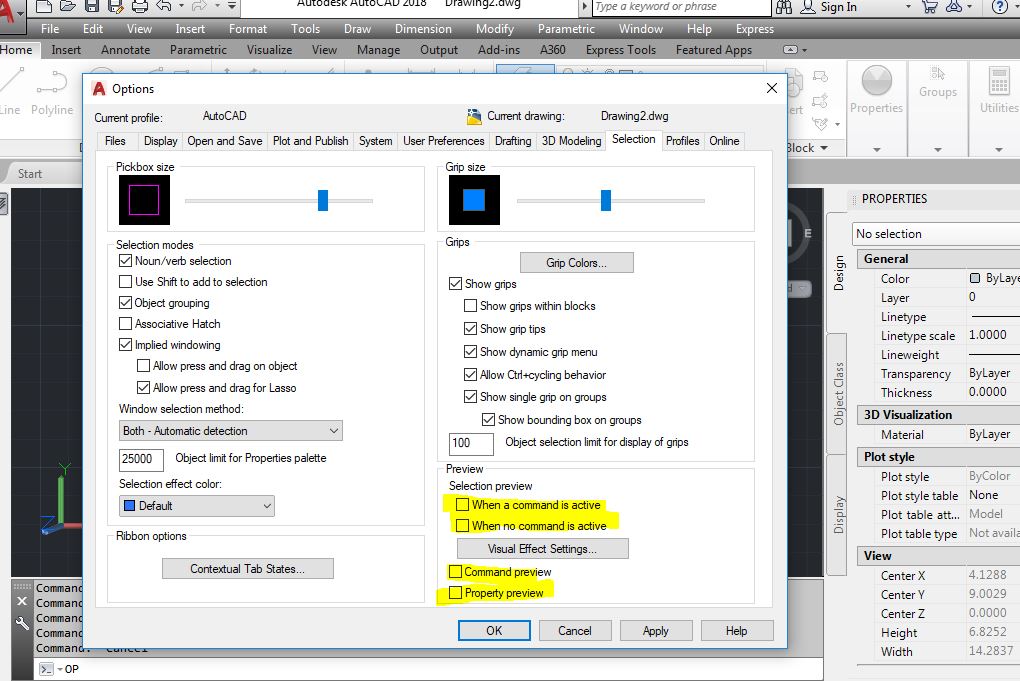
While you hover your mouse over an object in the drawing, it is high-lightened by default. This makes the computer processor a bit of work to do. you can avoid this by setting the SELECTIONPREVIEW system variable to 0. You can do this from the Options window as well.
6- Set SELECTIONCYCLING to 0 – Select from Objects
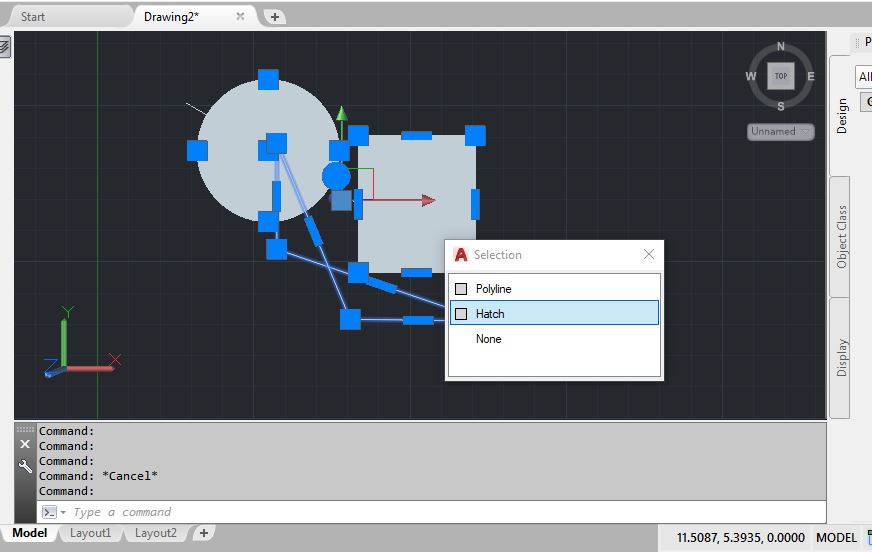
Every time you select multiple objects in AutoCAD drawing, a popup shows up to enlist the selected objects. This will let you select the objects that you want. But in most cases, you won’t need this. So, go ahead and set SELECTIONCYCLING to 0. It will turn off the selection cycling or overlapping.
7- Set PICKADD to 1 – Select Multiple
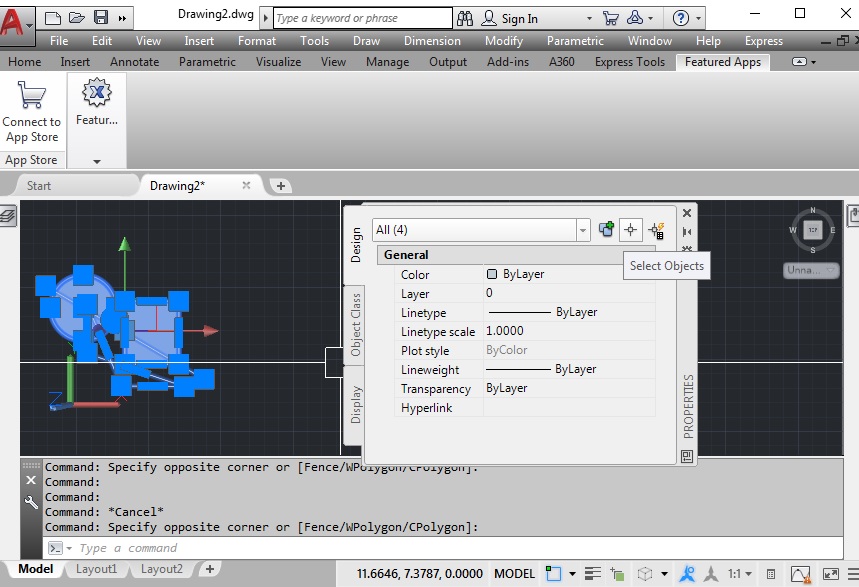
Maybe you fell into a situation when your selected objects are missed while you select the next object in the drawing. This is when the PICKADD system variable comes into action. If it is set to 0, any objects previously selected will be unselected when you make a new selection.
If PICKADD is set to 1, this will add the selected objects into the selection set while you keep on selecting the new entities by making a window or simply clicking on the objects. This is used to enable disabling the subsequent selection in AutoCAD software.
You can toggle to PICKADD by using the PICKADD button at the upper right section of the Properties dialogue box.
8- Set AUTOCOMPLETE to No – Commands and Shortcuts
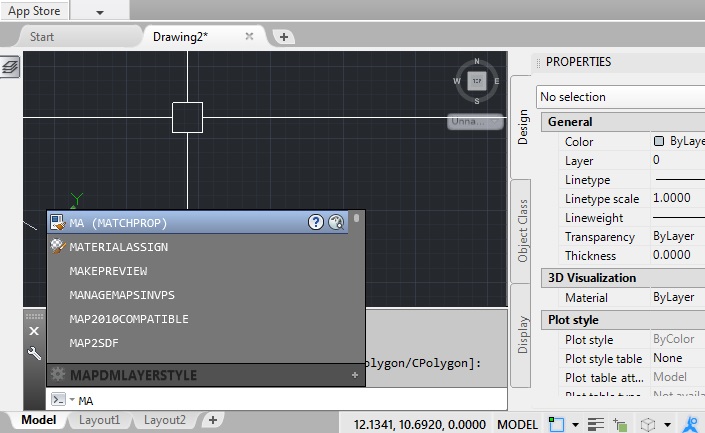
one of AutoCAD’s very useful yet memory-consuming features, AUTOCOMPLETE completes any command you type in the command line. for example, when you type MA in the command line, it will enlist all of the commands starting with MA and highlight the most relevant in the command line. You can turn it off to save your computer a bit of processing memory.
9- Set LOCKUI to 0 – Lock User Interface
Set LOCKUI to 0. This will lock the toolbars in the user interface. This will improve the performance when the toolbars are locked.
10- Set UCSDETECT to 0 – Dynamic UCS
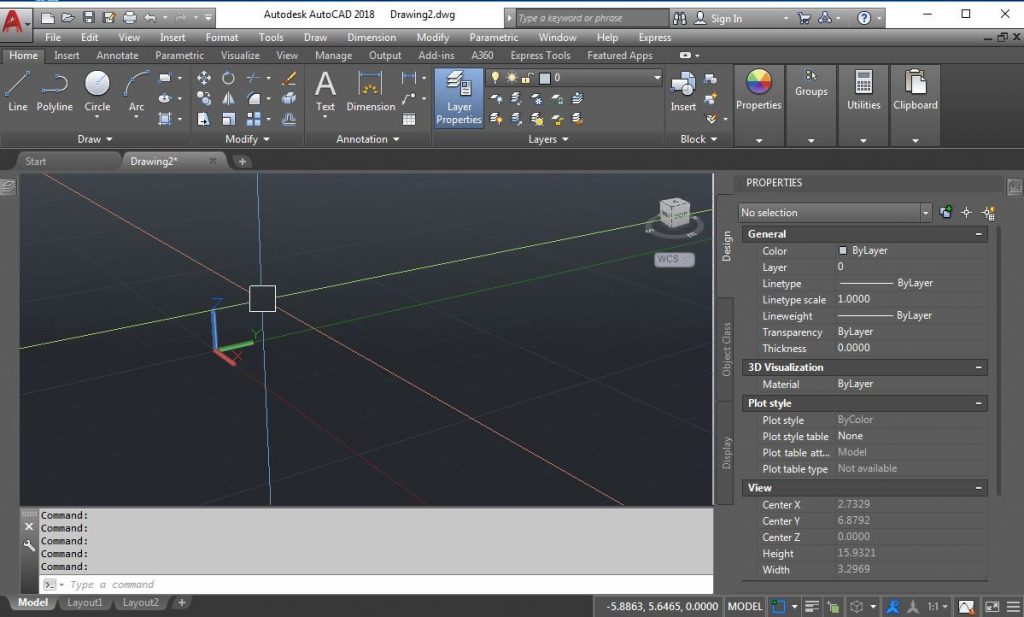
To Display dynamic UCS in your drawing, set this system variable to 0. This will show the UCS icon aligned with the current plane of the drawing.
11- Set DRAWORDERCTL to 3 – Over Lapping Objects

This gives you control over the overlapping objects. Setting this variable to 0 will speed up regeneration while switching tile mode and when regenerating in model space.
12- HPDLGMODE – Hatch Window Speed Up AutoCAD
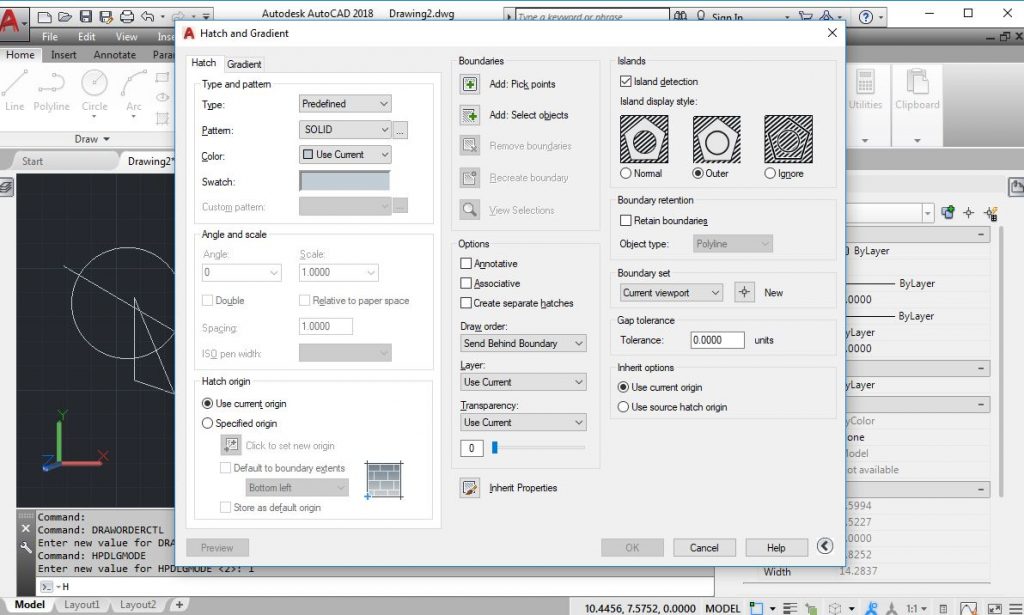
In newer versions of AutoCAD, the hatch control setting is all set in the tool palate. If you want the same old hatch window to work with the hatch and gradient, Set HPDLGMODE to 1 to display the hatch/Gradient box for items selected in the drawing.
13- Set LAYERDLGMODE to 0 – Layer Dialogue Box
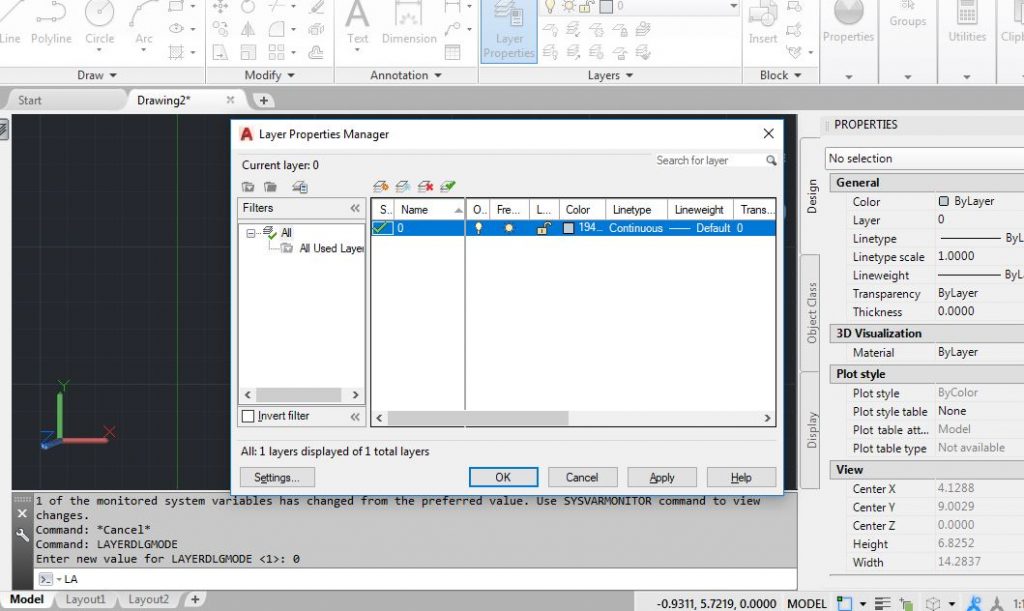
This is used to switch off the layer’s palette and switch back to the classic Layer Properties Manager dialogue box. Set LAYERDLGMODE to 0 to speed up the loading of the layer’s palette. If you still love the same old Layer Properties Manager window, this system variable is much more helpful. Moreover, it will help you to boost AutoCAD Software performance.
In response to this, the Layer Properties Manager palette is always open and docked while we work. On the other hand, the old-style dialogue box will close and will not use the memory while working.
14- Set MBUTTONPAN to 1 – Middle Mouse Button
The behavior of the middle mouse button (Wheel) can be controlled by the MBUTTONPAN system variable. Set it to 0 if you want to assign the middle mouse button for any action specified in the customization file (normally snap menu). set to 1 for the pan command as it is the default.
15- Use the PURGE command
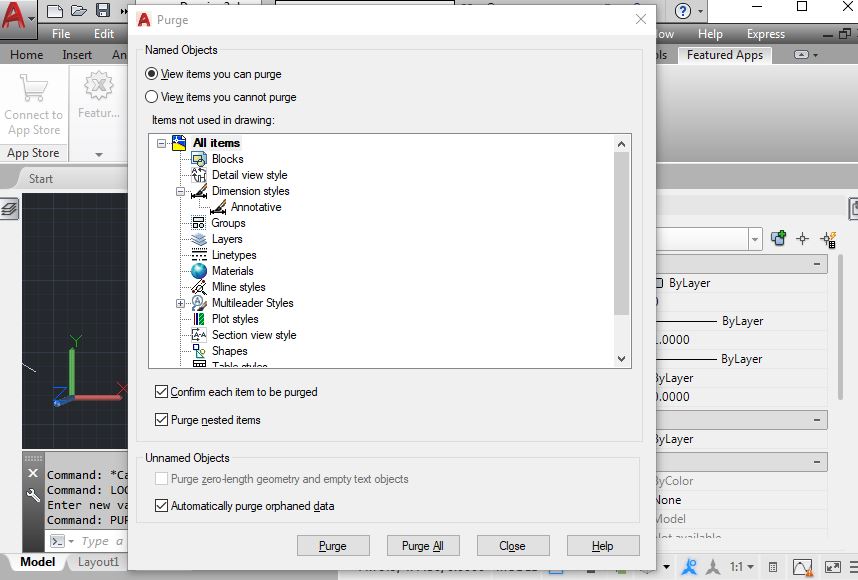
The PURGE command behaves just like a broom in AutoCAD. It deletes any unused blocks, layers, dim styles, text styles, and many more the list is long and includes almost all of the object types in any AutoCAD drawing. Deleting unnecessary styles and object definitions from the drawing will also reduce the drawing size.
16- CONVERT command – Convert Object

Convert Command is another tool that is used to reduce file size and memory. The CONVERT command will migrate any old version hatches or polylines to the new AutoCAD version.
17- Freeze Unused Layers
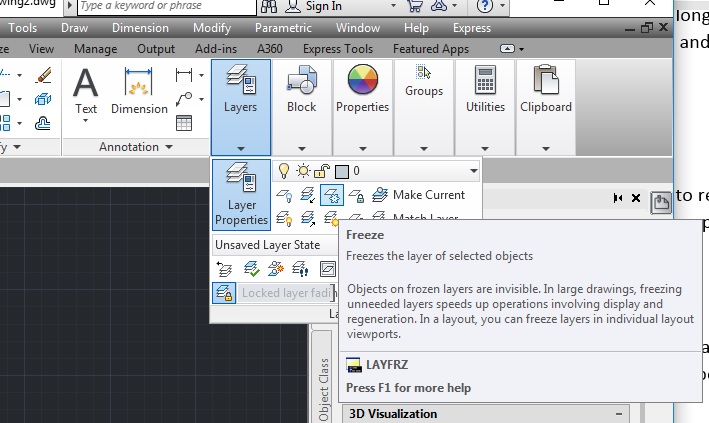
While working with large drawings, freeze or hide any of the layers that are not in use. This will improve drawing and drafting performance. This will speed up zooming, regenerating, and selection in the drawing.
18- Set INDEXCTL to 0
A rarely used system variable is used to control the spatial indexes and layers associated with the current drawing. Set INDEXCTL to 0 for improved performance. If it is set to 1, 2 or 3, the drawing save time will increase, resulting in slower processing of drawing. For a new drawing, the default value is set to 0. Just to be sure, have a look and change it to 0.
19- Set FILLMODE to 1 – Solid Fill Visibility

This performance booster is used to specify if the solids, hatches, and polylines are filled in or not. Set this system variable to Off to decrease time while regenerating the drawing.
20- Unload Xrefs and Images.
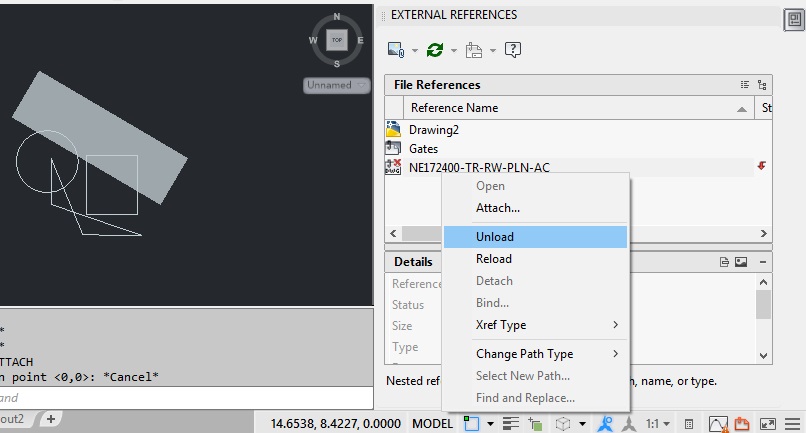
This is another AutoCAD productivity tip that I have personally tested, and it gives jaw-dropping results to increase the speed of any AutoCAD drawing.
External references, attached images, or PDF files are some of the main reasons for slowing down a drawing file. Unload any unused external references, and you will be surprised by the amount of decrease in memory usage and boost in performance.
And the Bonus
Optimize Command Line Input Search Options

Boost your AutoCAD productivity by fine-tuning your Command Line input search options. Take advantage of the settings within the dialogue box, where you can disable Autocomplete, Autocorrect, and Search content at the search box checkboxes.
By optimizing these options, you empower AutoCAD to respond swiftly to your commands, streamlining your workflow and enhancing overall efficiency. This simple adjustment not only accelerates your interactions with the software but also ensures a more seamless and intuitive experience, allowing you to focus on your designs without unnecessary delays.
Conclusion
Many factors result in slow drawing processing. Save your time by using these AutoCAD shortcut commands to boost your AutoCAD productivity and minimize time.
So, how many of you have already been using any of these commands, share your story with us.
Some Recommended Posts
Download Free Lisp Files For Level Interpolation Slope and Grade
In-Depth Introduction to Object Snaps In AutoCAD


